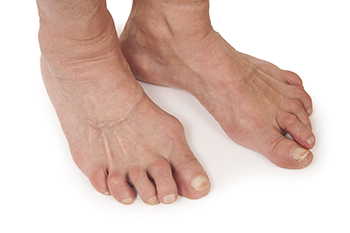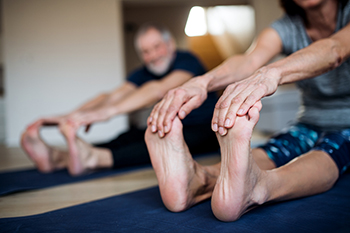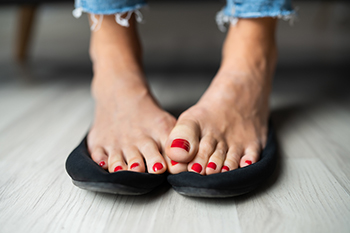
The Achilles tendon plays an essential role in your daily movements, facilitating activities like running, jumping, and even just walking. This tendon connects the heel bones to the calf muscles, allowing you to lift your heels and push up on your toes with ease. However, when faced with a ruptured or torn Achilles tendon, surgical intervention may be necessary to restore functionality and reduce the risk of re-rupture. An Achilles tendon rupture can occur during activities that involve sudden, forceful movements, or it may happen from chronic wear and tear. After such an injury, surgical options are required to reattach the torn ends of the tendon. The two primary options are open surgery and percutaneous surgery. Open surgery involves a single large incision at the back of the leg, while percutaneous surgery utilizes several smaller incisions. Surgeons may opt to wait a week post- injury to allow swelling to decrease before proceeding with either approach. In both cases, the surgeon sews the tendon back together through the incisions. Rehabilitation from Achilles tendon surgery is likely to take between six and nine months. For more information about managing an Achilles tendon rupture, it is suggested that you make an appointment with a podiatrist.
Achilles tendon injuries need immediate attention to avoid future complications. If you have any concerns, contact one of our podiatrists of Jill Einhorn, DPM and James Einhorn, DPM. Our doctors can provide the care you need to keep you pain-free and on your feet.
What Is the Achilles Tendon?
The Achilles tendon is a tendon that connects the lower leg muscles and calf to the heel of the foot. It is the strongest tendon in the human body and is essential for making movement possible. Because this tendon is such an integral part of the body, any injuries to it can create immense difficulties and should immediately be presented to a doctor.
What Are the Symptoms of an Achilles Tendon Injury?
There are various types of injuries that can affect the Achilles tendon. The two most common injuries are Achilles tendinitis and ruptures of the tendon.
Achilles Tendinitis Symptoms
Rupture Symptoms
Treatment and Prevention
Achilles tendon injuries are diagnosed by a thorough physical evaluation, which can include an MRI. Treatment involves rest, physical therapy, and in some cases, surgery. However, various preventative measures can be taken to avoid these injuries, such as:
If you have any questions please feel free to contact our offices located in Brooklyn and Astoria, NY . We offer the newest diagnostic tools and technology to treat your foot and ankle needs.

Rheumatoid arthritis, or RA, is an autoimmune disorder that primarily affects the joints, and the feet are often one of the first areas to display symptoms. Understanding the signs of RA in the feet is essential for early diagnosis and effective management of this chronic condition. One common symptom of RA in the feet is joint pain and stiffness. Affected individuals may experience discomfort in the joints of the toes, ankles, or the midfoot. This pain is typically more pronounced in the morning and may improve with movement. Swelling is another noticeable sign. RA can cause inflammation in the synovium, a lining that surrounds joints. When this occurs in the feet, it leads to visible swelling, making it harder to wear shoes comfortably. Deformities, such as bunions, claw toes, or hammertoes, can also develop due to the erosion of joint tissues. These ailments are often accompanied by limited mobility in the affected toes. If you notice these symptoms in your feet, it is suggested that you consult a podiatrist who can effectively diagnose RA, and help you to manage this condition.
Because RA affects more than just your joints, including the joints in your feet and ankles, it is important to seek early diagnosis from your podiatrist if you feel like the pain in your feet might be caused by RA. For more information, contact one of our podiatrists of Jill Einhorn, DPM and James Einhorn, DPM. Our doctors will assist you with all of your podiatric concerns.
What Is Rheumatoid Arthritis?
Rheumatoid Arthritis (RA) is an autoimmune disorder in which the body’s own immune system attacks the membranes surrounding the joints. Inflammation of the lining and eventually the destruction of the joint’s cartilage and bone occur, causing severe pain and immobility.
Rheumatoid Arthritis of the Feet
Although RA usually attacks multiple bones and joints throughout the entire body, almost 90 percent of cases result in pain in the foot or ankle area.
Symptoms
Diagnosis
Quick diagnosis of RA in the feet is important so that the podiatrist can treat the area effectively. Your doctor will ask you about your medical history, occupation, and lifestyle to determine the origin of the condition. Rheumatoid Factor tests help to determine if someone is affected by the disease.
If you have any questions please feel free to contact our offices located in Brooklyn and Astoria, NY . We offer the newest diagnostic and treatment technologies for all your foot and ankle needs.

Exercising the feet and ankles regularly can ward off pain and strengthen these areas, enhancing flexibility in the process. Simple routines like stretching the big toe, spreading the toes, extending the Achilles tendon, and walking in sand can be especially helpful. These exercises ensure that the foot muscles are strong and supportive, contributing to an increased range of motion which is vital for long-term activity and mobility. These types of exercises are straightforward and can be easily integrated into daily routines without the need for specialized equipment. Whether at home or as part of a gym workout, they can become a regular aspect of anyone's fitness regimen, aiding in the maintenance of foot health and overall well-being. If you are interested in learning more about stretching the feet and specific exercises you can do, it is suggested that you make an appointment with a podiatrist who can provide the information you are seeking.
Why Stretching Is Important for Your Feet
Stretching the feet is a great way to prevent injuries. If you have any concerns with your feet consult with one of our podiatrists from Jill Einhorn, DPM and James Einhorn, DPM. Our doctors will assess your condition and provide you with quality foot and ankle treatment.
Stretching the Feet
Stretching the muscles in the foot is an important part in any physical activity. Feet that are tight can lead to less flexibility and make you more prone to injury. One of the most common forms of foot pain, plantar fasciitis, can be stretched out to help ease the pain. Stretching can not only ease pain from plantar fasciitis but also prevent it as well. However, it is important to see a podiatrist first to determine if stretching is right for you. Podiatrists can also recommend other ways to stretch your feet. Once you know whether stretching is right for you, here are some excellent stretches you can do.
It is best to go easy when first stretching your foot and work your way up. If your foot starts hurting, stop exercising to ice and rest the foot. It is advised that you then see a podiatrist for help.
If you have any questions, please feel free to contact our offices located in Brooklyn and Astoria, NY . We offer the newest diagnostic and treatment technologies for all your foot care needs.

Excessive sweating, termed hyperhidrosis, occurs when individuals sweat profusely without apparent reasons such as heat or physical exertion. The two types of hyperhidrosis are focal hyperhidrosis, localized to specific body parts like the feet, and generalized hyperhidrosis, affecting the entire body due to potential medical issues. Regular sweating is the body's natural cooling mechanism during heat or exertion, whereas excessive sweating may be due to idiopathic hyperhidrosis, a hereditary condition with unknown causes. Certain medical conditions and medications can also be culprits. While not directly harmful, hyperhidrosis can impact an individual's emotional well-being and social interactions, and lead to conditions like eczema. Diagnosis involves an evaluation. Managing hyperhidrosis includes maintaining hygiene, wearing breathable fabrics, and drinking ample water. If your feet sweat excessively, it is suggested that you make an appointment to see a podiatrist who can evaluate your specific condition and offer appropriate treatment options.
If you are suffering from hyperhidrosis contact one of our podiatrists of Jill Einhorn, DPM and James Einhorn, DPM. Our doctors can provide the care you need to attend to all of your foot and ankle needs.
Hyperhidrosis of the Feet
Hyperhidrosis is a rare disorder that can cause people to have excessive sweating of their feet. This can usually occur all on its own without rigorous activity involved. People who suffer from hyperhidrosis may also experience sweaty palms.
Although it is said that sweating is a healthy process meant to cool down the body temperature and to maintain a proper internal temperature, hyperhidrosis may prove to be a huge hindrance on a person’s everyday life.
Plantar hyperhidrosis is considered to be the main form of hyperhidrosis. Secondary hyperhidrosis can refer to sweating that occurs in areas other than the feet or hands and armpits. Often this may be a sign of it being related to another medical condition such as menopause, hyperthyroidism and even Parkinson’s disease.
In order to alleviate this condition, it is important to see your doctor so that they may prescribe the necessary medications so that you can begin to live a normal life again. If this is left untreated, it is said that it will persist throughout an individual’s life.
A last resort approach would be surgery, but it is best to speak with your doctor to find out what may be the best treatment for you.
If you have any questions please feel free to contact our offices located in Brooklyn and Astoria, NY . We offer the newest diagnostic and treatment technologies for all your foot and ankle needs.